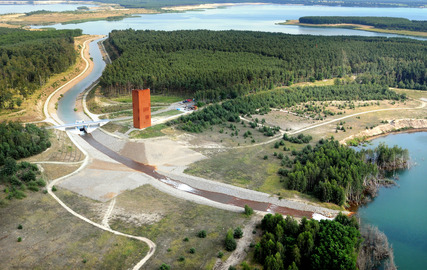Useful information about the place and its history
The village of Kleinkoschen was mentioned for the first time in a document in 1474. Kleinkoschen was Sorbian up until the start of the 20th Century, just like most places in the surrounding area.
Kleinkoschen was laid out as a village with a square. The name is derived from the Slavonic word Kosua and means basket/wicker basket or fish trap. Making wicker baskets was one of the main jobs of Koschen's citizens. The inhabitants made their living from agriculture and fishing. The oldest village seal from 1738 depicts two fish, making reference to the village's former richness in fish in the Black Elster area. Numerous farms also had their own fish pond.
The situation changed in the mid-1950s. Almost 90 % of the land, including farmsteads, fell victim to mining. The hole left behind from mining started filling up with groundwater from 1973 and was then actively flooded between 2004 and 2013. This mine became Lake Geierswald.
On 1st January 1974, Kleinkoschen was integrated into Großkoschen. A new estate in Kleinkoschen was built in the 1990s, which led to an increase in the number of residents in the district. On 31st December 2001, Kleinkoschen was incorporated into Senftenberg as part of the community of Großkoschen.
The landmark – a symbol of Lausitz Lakelands
The “rusty” viewing tower at the mouth of Sorno Canal in Lake Sedlitz has developed into one of the most popular attractions for visitors to the Lausitz Lakelands. The striking construction made from rusty-red Corten steel represents the region's turnaround from mining to a new future. The tower stretches 30 metres into the sky. It is perfect as a resting place for walkers, cyclists and skaters and also offers an impressive all-round view across the Lakelands - ideal for observing the development of the Lausitz Lakeland area.
Tip: Anyone who wants to experience the water landscape from a different perspective can take a trip to the 16-meter long, floating jetty.


